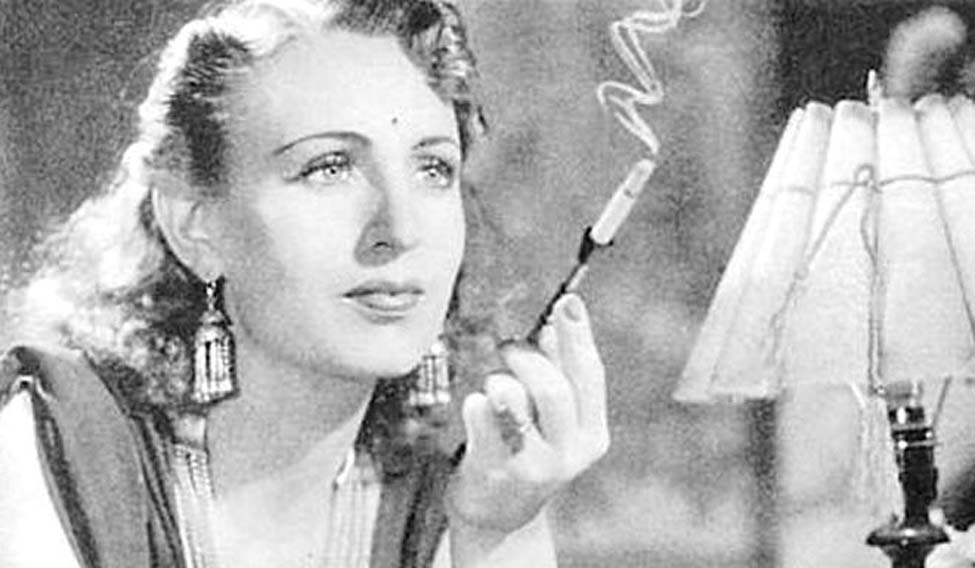Bollywood was more of a colonial construct than we thought—even in the days the Indian freedom struggle was at its initial pitch. And in its initial days, it could also boast of strong feminist credentials. These contradictory impulses were fully showcased in the incredible career of one of its earliest, most identifiable and popular stars—the Fearless Nadia, aka "Hunterwali".
Subverting the ambivalent, largely patriarchal, attitude to women that has been an Indian hallmark, Indian women were marching shoulder to shoulder with men to win freedom, and meanwhile, the nascent national film industry, from the 1930s to the mid-1940s, had a raft of female stars literally dominating the scene, overshadowed their male counterparts and defined Bollywood creations.
Among this, was the extraordinary and unlikely figure of the Australian-born, Scottish-Greek, tall, blue-eyed, blonde 'Indian' actress Mary Evans, whose 110th birth anniversary is on January 8.
And her story is especially instructive at a time when gender inequality is still an unwelcome feature of the entertainment industry, Bollywood, Hollywood and what have you.
Coming to India with her family in 1911—the year Ashok Kumar was born, Fearless Nadia (1908-96), as she came to be known for doing her own stunts onscreen, was still around when Shah Rukh Khan was rising to the top.
"A large blonde, her movie roles involved beating up Indian men and then bursting into loud laughter...," says journalist-cum-author Mihir Bose in Bollywood: A History. She was also famous for brandishing a whip, carrying stuntmen on her shoulders and her exuberant shout of "hey-y-y".
The daughter of a British Army soldier, who died in the First World War, leaving her Greek mother and Mary to fend for themselves in Bombay, she spent her childhood in Peshawar where they moved, travelling by the Frontier Mail. And when there were no opportunities there when she grew out of her teens, she returned to Bombay by the same train—which would later be the name of one of her most famous films.
After stints as a salesgirl, a circus performer and dance troupe member and changing her name to Nadia on an Armenian fortune-teller's advice, she decided to try her luck in films. She was recommended to the Wadias—J.B.H. and Homi—and in her first meeting, impressed them so much that they took her on.
While her looks and her (mis) or laboured pronunciation of Hindustani militated against her, she persevered—even rejecting the Wadias' suggestion that she be known as Nanda Devi and wear a black wig with long pigtails. And then they found the perfect vehicle for her—costumed stunt dramas.
While director Homi Wadia had a specialist bone-setter on the scene and others stood anxiously, she jumped onto a thin mattress. "The jump seemed fine, the cameraman said ‘okay', Homi shouted ‘Cut!' but Nadia was motionless. Everyone ran to her, fearing the worst. Then Nadia opened her eyes and let out a loud laugh. Fear turned to wonder and everyone broke into applause. At the end of the day's shooting, Homi held a meeting in his office for the entire staff and christened Nadia ‘Fearless Nadia', the name by which she was to be known for the rest of her film career.."
She went to do over three dozen films from Noor-E-Yaman (1935) to James Bond spoof Khilari (1968) and Ek Nanhi Munni Ladki Thi (1970), though she had more or less retired after marrying Homi in 1961, and the last two were just reprising of her old image.
While her films like Hurricane Hansa, Miss Frontier Mail, Lady Robinhood, Sher-E-Baghdad, Himmatwali, Stunt Queen, Toofani Tirandaz, Jungle Queen, Carnival Queen and Circus ki Sundari may now seem curiousities, they had their own significance—not only in Bollywood but in modern India social history as the heroine of films which were anti-British but starred a British woman.
"Her films were shunned by the Indian intellectuals but they appealed to the uneducated urban masses increasingly drawn to the cities, factory workers, tonga drivers, and they reached beyond India to Africa and the Far East, where her blonde looks and rebellious on-screen behaviour carried an enormous sex appeal...", says Bose.
And only if we could balance this with respect for her achievements—and extend this courtesy to all women, that would be the best tribute we could pay to her.
-IANS





